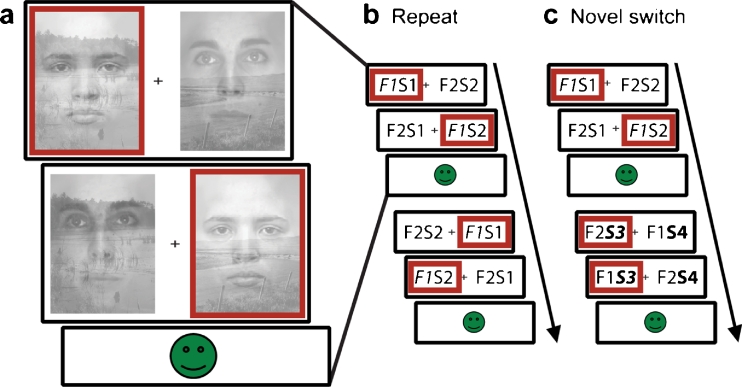Fig. 1.
Subjects were instructed to select one stimulus exemplar (left versus right) within one category (faces versus scenes) and to keep selecting that same exemplar for a number of trials, until novel exemplars were introduced in the non-selected category, requiring a switch in attention. a Stimuli consisted of superimposed exemplars of a face and a scene. Stimulus pairs were presented twice within each trial and the combination of face and scene was reversed on the second presentation relative to the first, enabling us to identify the attended stimulus. Feedback was presented after each trial and was positive only if the subject selected the correct stimulus twice within the trial. Red boxes indicate a possible response sequence. b, c Two consecutive trials constituting our two trial types of interest. The stimuli are displayed schematically for illustrative purposes (F1, face 1; S1, scene 1; F2, face 2; S2, scene 2). Attended stimuli are displayed in italic font. b Repeat trial: on the first trial, the subject attends to F1. On the next trial, no novel stimuli are introduced and the subject keeps attending to F1. The second trial is thus defined as a repeat trial. c Switch trial: The subject attends to F1 on the first trial. On the second trial, novel stimuli of the non-selected category, in this case scenes, are introduced (S3 and S4). The subject detects this change and switches attention to one of two novel stimuli (here S3)

